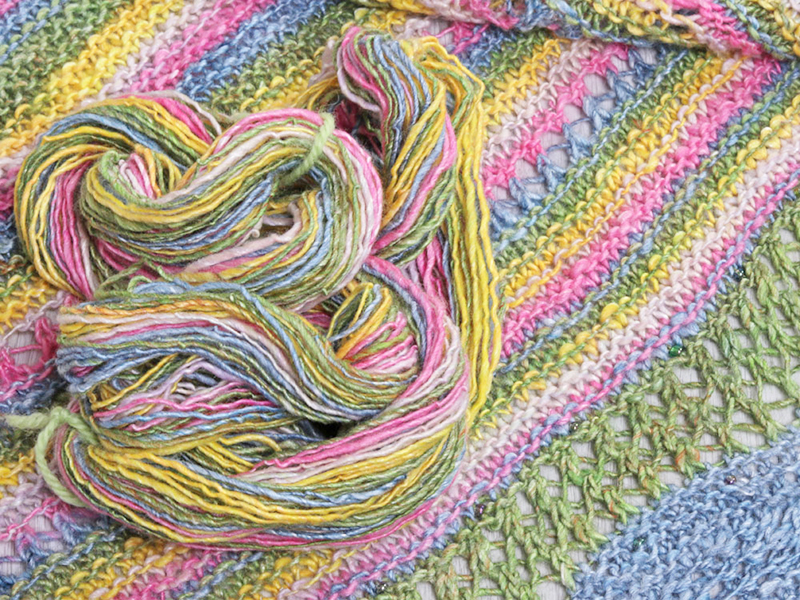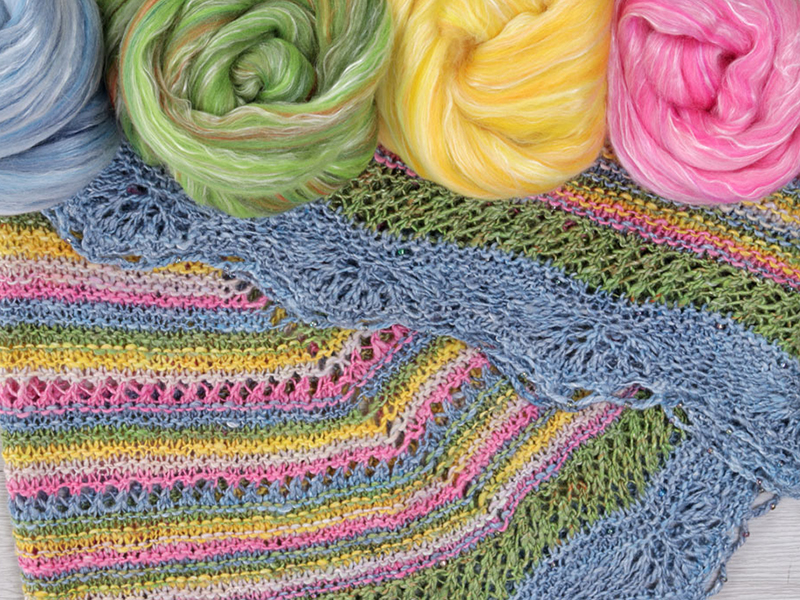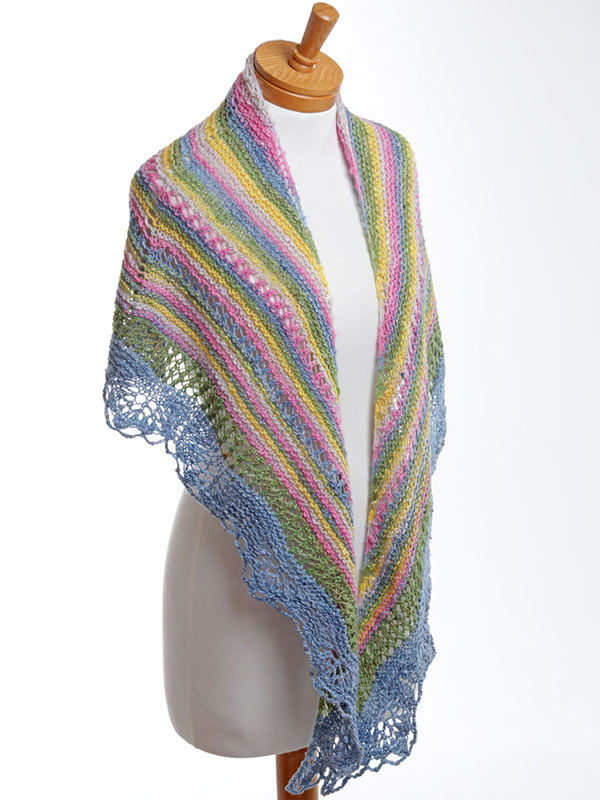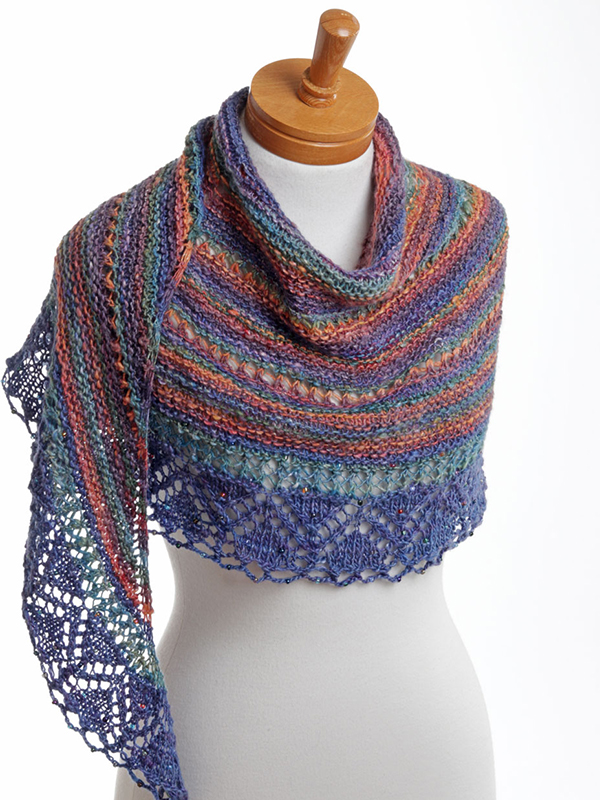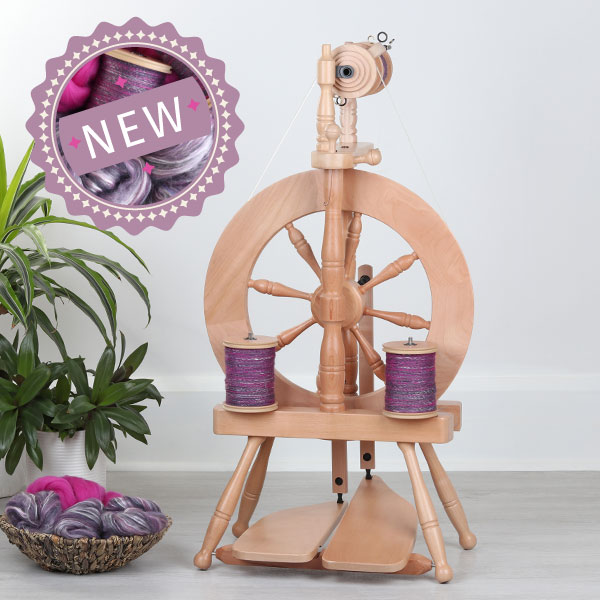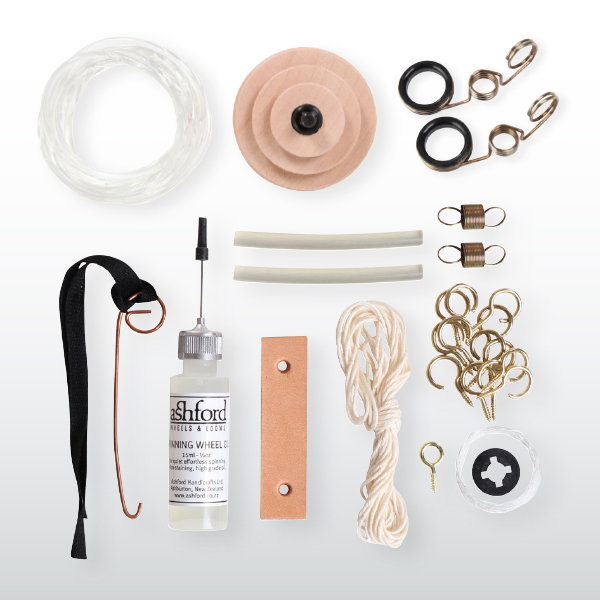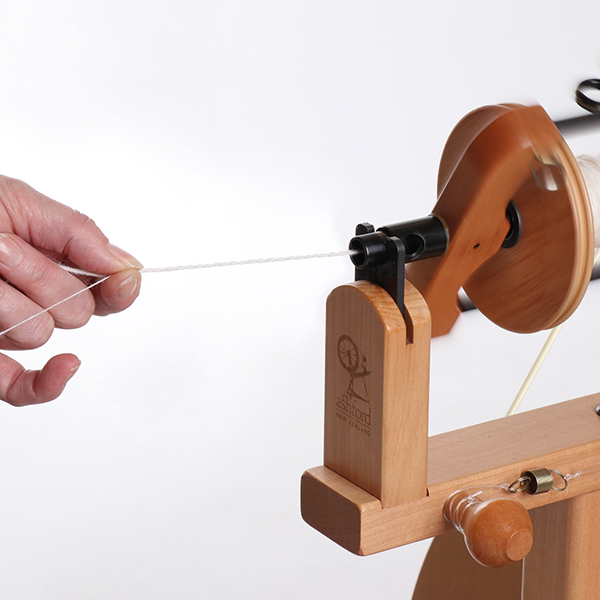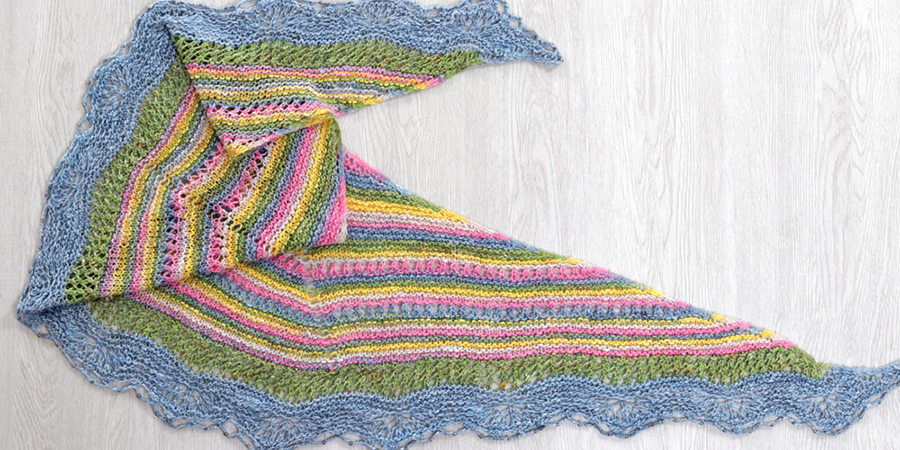
The Singles Shawl – technique and pattern
You don’t always have to ply! These wonderful shawls were all knitted from handspun singles. Jan Gibb, Ashford dealer, dyer and designer has kindly shared her technique and pattern for these beautiful shawls. If you are anything like me you probably have some handspun singles in your stash ready to go! If not there are some great tips below for spinning singles for knitting.
First – What is a “singles” yarn? It is simply a yarn that is only one ply.
Why would you want to use a singles yarn instead of a plied yarn?
One of the most popular answers is colours stay clear – plied yarns result in the colours being “muddied” or the yarn having a striped barber pole effect. It is also quicker to spin as there is no second process of plying. The look and feel of the yarn is different to plied yarns and sometimes you have beautiful fibres that you want to shine (literally sometimes!).
If you haven’t knitted with your handspun singles before then give this pattern a go! Please note Jan’s pattern is copyright and is for personal use only, please do not reproduce or sell.
Happy spinning and knitting!

- Have a well-prepared fibre (i.e. Ashford Merino/Silk blend).
- Use a larger whorl and enough tension to control the amount of twist.
- You may find it better to split the fibre lengthwise to have a smaller amount to work with.
- Treadle slowly and draft the amount of fibre consistently.
- A stand alone single requires less twist than a single created for plying.
- Too much twist will cause your knitting to bias to the right. Too little twist means the yarn will pull apart when working with it. Refer to twist angle chart for twist ratio of yarn used in shawls. 21° is good for knitting.
- Wind wool into a skein, place in warm water with a little detergent and leave for 10 minutes to soak. Take one end of the skein and lift it out of the water. Watch how the twist settles. Rinse in warm water and hang to dry.
- When dry, it is ready for knitting. Singles yarn is not suitable for knitting until it has been ‘washed and set’.
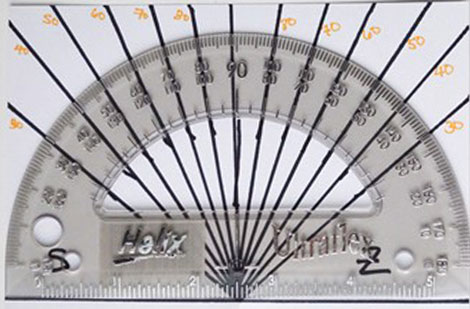
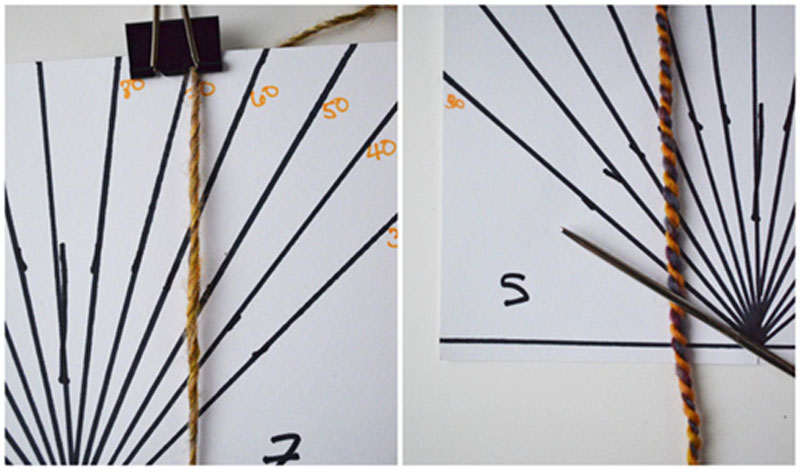
JAN GIBB - visit her Facebook page
BJsColourways
A LITTLE BIT ABOUT JAN
Jan began knitting when she was 6 years old and by the age of 12 she was knitting on a regular basis. In her early 20’s, with a young family, she began machine knitting and before long, in co-operation with neighbours, was making and selling her work and knitting for orders. It was during this time she learnt many techniques of knitting and finishing garments that she still uses today.
Her next step in the woolcraft area was spinning and through this medium, over a number of years, she learnt to make her own patterns. This came about because each fleece has a different handle and thus a different finish, resulting in an individual garment or article. No longer could it be ‘one size fits all’. She works from schematics and diagrams and designs each garment to suit that particular yarn and tension, sometimes combining ideas and shapes from different garments or pictures.
Her involvement in spinning and knitting led her to be part of the Southland Spinners, Weavers & Dyers, firstly as a group representative, then as President for a term and as Southland Area Delegate for 5 years. This meant attending Council and Executive meetings six monthly and being involved in the ongoing organisation of New Zealand Spinning, Weaving and Woolcrafts Society (Creative Fibre).
Locally, She had organised classes, Area Learning Days and Camps. She has taught Knitting, Dyeing and Spinning at these events. Jan has also been a guest speaker at local group meetings and has taught knitting classes and spinning/dyeing classes at WEA in Invercargill and classes on Colour, Dyeing, Felting, Silk paper making to many other groups.
She has exhibited both locally and nationally and has had an article in an exhibition travelling NZ, called “Out Of Sight” for which she made a ‘Knitting Doctor’s Bag’ modelled on an old fashioned medical doctors bag in the local museum. Instead of instruments, it contains all that a knitter would need.
In the 1980’s Jan gained a Quality Mark Certificate through NZSWWS for knitting and spinning, and in 1989 she attended a 6 month full time Fibre Course at Southland Polytechnic – a course which extended her knowledge in many different areas of woolcraft and design. In 2001 Jan completed a Colour Course run by Creative Fibre (NZSWWS) which expanded her already extensive knowledge about colour.
In 2003 Jan began her own fibre business called BJ’s Colourways & Collectibles which she runs from a studio on her property. Jan buys in fibres and yarns and dyes them for resale, along with the fibre and dyes for folk to do their own dyeing. Jan saw a gap in the market in Southland for this sort of thing when those learning spinning kept asking for somewhere to buy their supplies. She has now branched into supplying fabric and dyes to patchworkers, silk, rayon and cotton yarn for embroiderers and silk fibre, mohair products. It has been a time of establishing the product range for fibre artists. Because Jan specializes in colour, many folk don’t realize what she has until they actually see it all, so she invites groups to come in for their meeting day and watch demonstrations.
Jan reads extensively – knitting and spinning magazines and books from which she gleans many ideas and techniques. Beside spinning and knitting, she also likes to work with colour and dye much of the wool she uses. Jan continues to experiment combining other fibres with wool to achieve distinctly different yarns and products.

